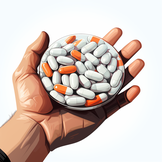Morning wood and erectile dysfunction relationship.
- The Intricacies of Morning Wood and Erectile Dysfunction
- The Role of Physiological Factors in Erectile Dysfunction: Nerve Damage and Blood Supply to the Penis
- Overview of Erectile Dysfunction (ED)
- The Importance of Morning Wood in Indicating Healthy Erectile Function
- Physiological Mechanisms Behind Morning Wood: Role of Sleep, Nerves, Blood Supply, and Circulation
- How the Absence of Morning Wood Can Indicate Erectile Dysfunction
- Counseling and Therapy as Solutions for Erectile Dysfunction: Addressing Underlying Psychological Issues
- Differentiating Between Physical and Psychological Causes of Erectile Dysfunction
- Understanding Morning Wood: Nocturnal Penile Tumescence (NPT)
- The Impact of Non-Physiological Factors on Morning Wood and ED: Stress, Anxiety, and Medication Side Effects
- The Relationship Between Morning Wood and Erectile Dysfunction
- Morning Wood: A Barometer of Erectile Health

The Intricacies of Morning Wood and Erectile Dysfunction
Morning wood, scientifically known as nocturnal penile tumescence (NPT), is a common physiological phenomenon that occurs among men. It is characterized by spontaneous erections during sleep or upon awakening. On the other hand, erectile dysfunction (ED) is a health condition that impedes a man's ability to maintain an erection sufficient for sexual intercourse. A fascinating aspect of the relationship between morning wood and erectile dysfunction is how the presence or absence of the former can signal the latter's status.
The Role of Physiological Factors in Erectile Dysfunction: Nerve Damage and Blood Supply to the Penis
Erectile function hinges on the intricate harmony between the nervous system and blood supply to the penis. When a man is sexually aroused, nerve signals prompt the blood vessels in the penis to expand, facilitating increased blood flow which results in an erection. Consequently, any issues with nerve function or blood supply can lead to erectile dysfunction.
Nerve damage can occur due to various health conditions, including diabetes and prostate surgery, while impaired blood supply may result from cardiovascular diseases or high cholesterol levels. Such physical ailments can disrupt the complex process of achieving an erection, contributing to erectile dysfunction.
Overview of Erectile Dysfunction (ED)
Erectile dysfunction is a common problem among men, especially as they age. It's characterized by the consistent inability to achieve or maintain an erection firm enough for sexual intercourse. ED can be a source of significant stress and anxiety, impacting a man's self-esteem and relationships.
The Importance of Morning Wood in Indicating Healthy Erectile Function
Morning wood is considered a sign of healthy erectile function. It occurs due to changes in the body's hormonal balance during the different stages of sleep. Specifically, testosterone levels tend to be higher in the morning, which can trigger an erection. Moreover, during REM (rapid eye movement) sleep, the body’s parasympathetic nervous system becomes more active, leading to an increase in blood supply and thus causing an erection.
Physiological Mechanisms Behind Morning Wood: Role of Sleep, Nerves, Blood Supply, and Circulation
The process behind morning wood involves several physiological mechanisms. First, during the REM stage of sleep, the body experiences various hormonal changes. This includes a rise in testosterone levels, which plays a significant role in sexual function and drive. Additionally, the nervous system and blood supply to the penis become more active, leading to an erection.
During REM sleep, there's also a decrease in the production of norepinephrine, a hormone that constricts blood vessels and thus inhibits erections. This decrease, combined with the increased activity of the parasympathetic nervous system, leads to the dilation of blood vessels and an increased blood flow to the penis, resulting in an erection.
How the Absence of Morning Wood Can Indicate Erectile Dysfunction
If a man consistently doesn't experience morning wood, it may be an early sign of erectile dysfunction. This could be due to a disruption in any of the aforementioned physiological processes, such as diminished testosterone levels, nerve damage, or impaired blood supply to the penis.
Counseling and Therapy as Solutions for Erectile Dysfunction: Addressing Underlying Psychological Issues
Erectile dysfunction is not always rooted in physical causes. Sometimes, psychological issues such as stress, anxiety, and depression can interfere with sexual function. In such cases, counseling or therapy can be instrumental in addressing these underlying issues. Through these methods, men can learn to manage stress, overcome anxiety, and cope with depression, thereby potentially improving their erectile function.
Differentiating Between Physical and Psychological Causes of Erectile Dysfunction
Differentiating between physical and psychological causes of erectile dysfunction can be challenging but is crucial for effective treatment. When ED is due to physical causes, there may be other accompanying symptoms such as difficulty in achieving an erection at any time, whether during sexual activity or in the form of morning wood. On the other hand, if a man can achieve erections (including morning wood) but struggles to do so during sexual intercourse, it may suggest that psychological factors are at play.
Understanding Morning Wood: Nocturnal Penile Tumescence (NPT)
Nocturnal penile tumescence, or morning wood, is a phenomenon wherein a man experiences spontaneous erections during sleep or upon waking. These erections aren't necessarily related to sexual thoughts or dreams but occur as part of the normal sleep cycle, specifically during REM sleep. Morning wood is a clear indication of proper physiological function relating to erections.
The Impact of Non-Physiological Factors on Morning Wood and ED: Stress, Anxiety, and Medication Side Effects
In addition to physiological factors, non-physiological aspects can also affect morning wood and erectile function. High levels of stress and anxiety can interfere with the body's hormonal balance and nerve function, potentially leading to diminished sexual function. Furthermore, certain medications can cause side effects that disrupt erectile function, including antidepressants, blood pressure medications, and certain pain relievers.
The Relationship Between Morning Wood and Erectile Dysfunction
Morning wood is a natural indicator of a healthy erectile function.Its consistent absence may signal potential problems such as erectile dysfunction.While morning wood is largely governed by physiological factors like sleep, nerves, and blood supply, the causes of ED can be multifactorial, encompassing both physiological and psychological components.
Understanding this relationship can help in diagnosing and treating ED effectively.
To address related questions - low testosterone levels can lead to decreased frequency or absence of morning wood. If a man doesn't get morning wood, it could be an early sign of ED or other underlying health conditions. Treatments for erectile dysfunction vary widely, ranging from medications, lifestyle changes, counseling, to surgery, depending on the root cause of the problem.
Morning Wood: A Barometer of Erectile Health
In conclusion, morning wood serves as a natural barometer of a man's erectile health. Its regular occurrence signifies healthy erectile function, whereas its absence may indicate potential issues such as erectile dysfunction. This relationship, while complex and multifaceted, is crucial in understanding, diagnosing, and treating erectile dysfunction, thereby contributing to a man's overall sexual health and well-being.



